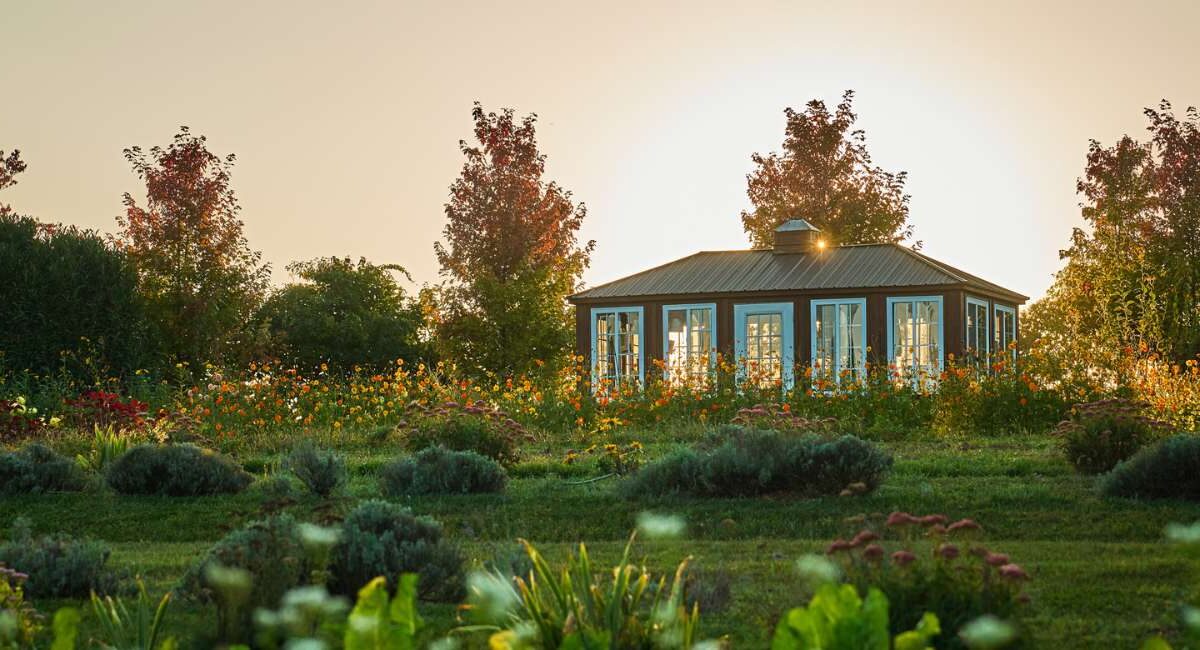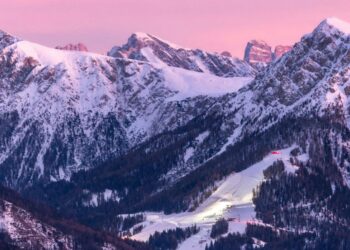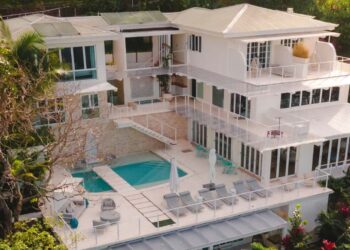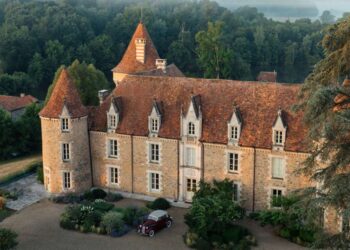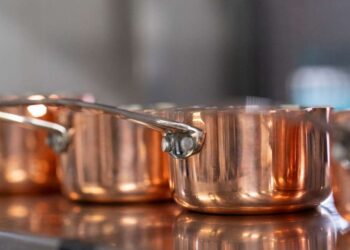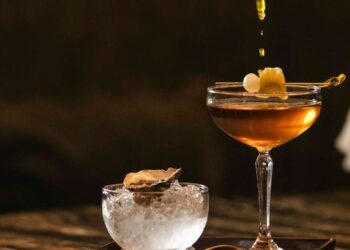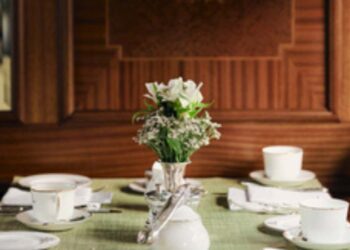New Jersey gets a bad rap. Although my roots lie further south, I’ve lived in the Garden State for nearly four decades and am familiar with the stereotypes from those who don’t: the idea that New Jersey is nothing more than smokestacks, oil refineries, and the turnpike of course. In reality, it is home to mountains and sea, rolling horse farms, and this — one of the state’s most enchanting estates.
Sipping morning coffee on the terrace of my suite at Pendry Natirar, just an hour from Manhattan — I gaze at the lush greenery surrounding me. This place reads more English countryside than Garden State. Like many locals, I’m no stranger to this picturesque parcel of land. In both the blaze of summer and snowy stillness of winter, I’ve walked the twisty trails of this 500-acre park, so large it actually spans three boroughs: Peapack-Gladstone, Far Hills, and Bedminster. I’ve also been coming to Ninety Acres, the acclaimed farm-to-table restaurant and cooking school, since its opening in 2009. But always, an air of mystery has surrounded the mansion on the hill (now Pendry) which, for decades, sat empty — a crumbling shell of its past glory.
The History
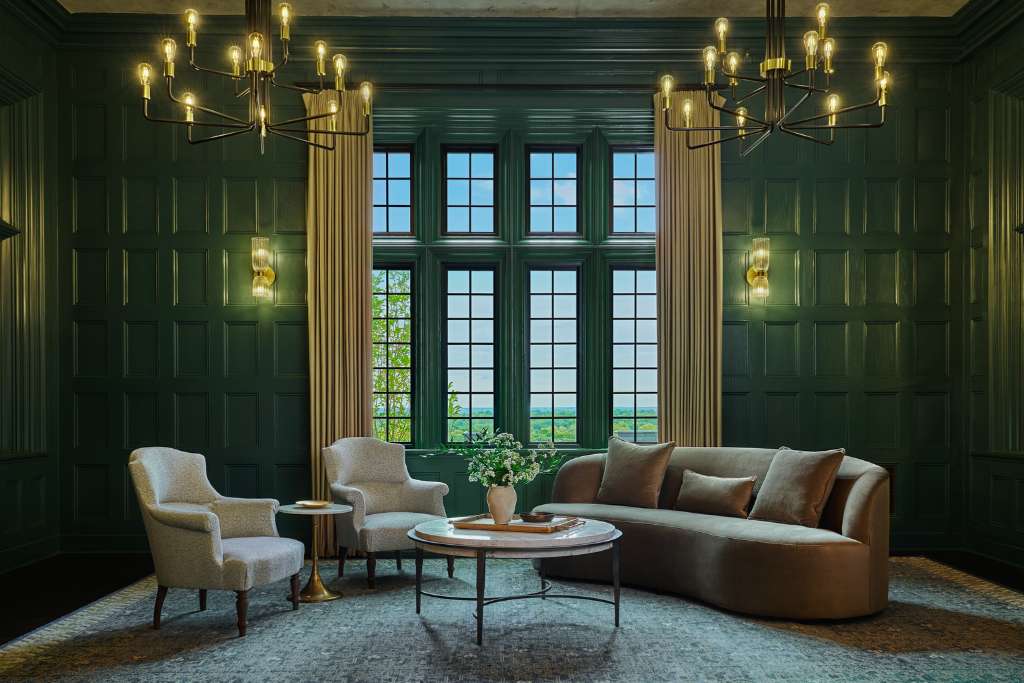
Over decadent truffle fries and a glass of rosé in front of a roaring fire in the hotel’s Great Room, I learn that the 40-room, tudor-style mansion was originally built in 1912 as a private residence for oil heiress Catherine “Kate” Macy Ladd and her husband Walter Graeme Ladd. They named the estate Natirar — Raritan spelled backward — after the river winding two miles across the property. While in residence, Kate started a small-scale convalescent home for women in need, offering them — along with medical recovery — a place to engage in art and poetry classes, walk in nature, breathe fresh air, and heal. Following Kate’s death (her husband passed first), the home relocated to the main mansion where it operated until 1983, when (per Walter’s will), the estate was bequeathed to the county.
“Women from the community still tell us they came here, or that their mother, aunt, or grandmother did,” one staff member tells me.
In time, the county sold off 90 acres (of the 500) to King Hassan II of Morocco, whose sons were attending nearby Princeton University. Following the King’s death, the parcel was once again sold back to the county, and ultimately to current owner Bob Wojtowicz who opened Ninety Acres and the adjacent organic farm, and began laying groundwork to find the perfect hotel partner. Which he ultimately found in Pendry, an offspring of Montage Resorts and Hotels.
Inside Pendry Natirar
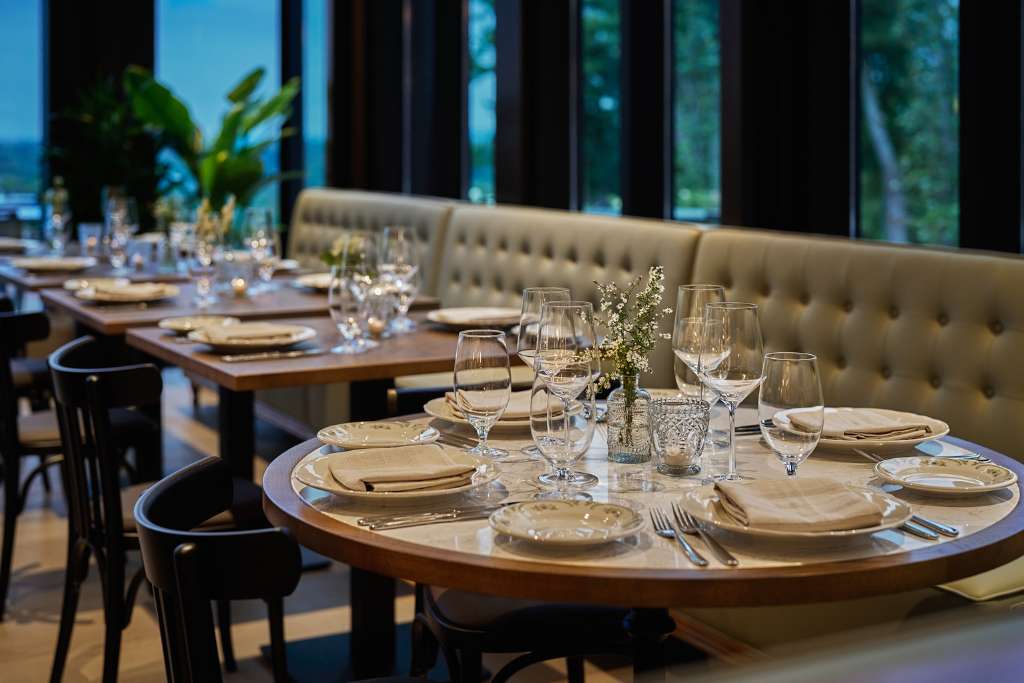
Driving up the long, winding road to the hotel, it all feels very Gatsby-esque with the sun shimmering through the trees, white-tailed deer grazing, as if on cue, on the lawn. But once inside the mansion’s original castle-like doors, there’s also a touch of contemporary California (a nod to Pendry’s roots). The original fireplaces, dark-paneled library, and billiard room — all meticulously preserved — now blend artfully into Ladd’s Tavern, a modern restaurant with floor-to-ceiling windows and outside tables spilling alongside fire pits and lush flower gardens. A conservatory-like walkway, filled with natural light, leads into the hotel.
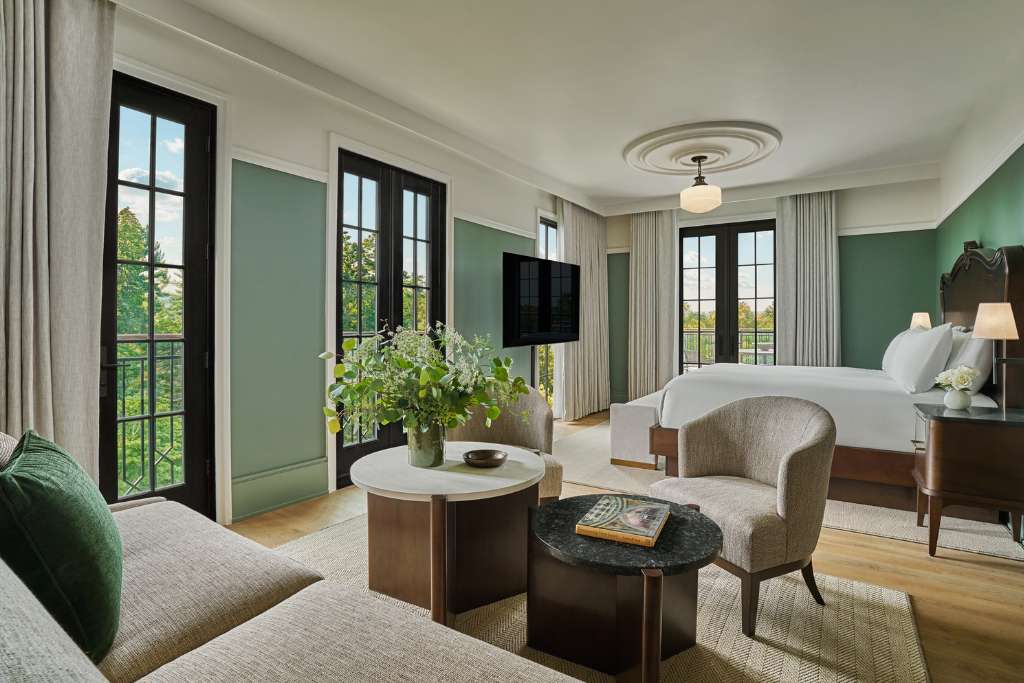
Rooms and suites are equally tranquil and light filled. Deep forest-green walls set off stark white linens and light hardwood floors. Hand-selected art graces the walls, and fresh seasonal breads — lemon in summer, pumpkin in fall — arrive warm from the oven. The standout for me though is the private terrace — every morning I pad in robe and slippers, coffee in hand, to watch the sunrise; take in the view. I also love my room location: just steps to the spa.
Farm to Spa
To say I am excited about the spa at Pendry Natirar is an understatement. With 12 treatment rooms, sauna, steam, a Himalayan salt room, warm indoor Jacuzzi pool, and stellar therapists, it easily rivals some of the top luxury hotel spas in NYC. Yet the ambiance, gentle and soothing, feels instantly familiar. Upon arrival, I’m met with a decadent (but familial to me) scent, the slow burn of a blood orange candle from Red Flower, one of my earliest spa-industry friends. I’m delighted to learn that the NYC-based company also handcrafts the therapeutic muds used in the spa, incorporating herbs and flowers (jasmine, rose) from the property’s own organic farm. After time in the steam and sauna, I move into the salt room where, against the pink-hued salt walls, I find another longtime spa friend: Kashwere. My original Kashwere blanket, purchased well over 15 years ago, is still as cushy and soft as it was the day I brought it home.
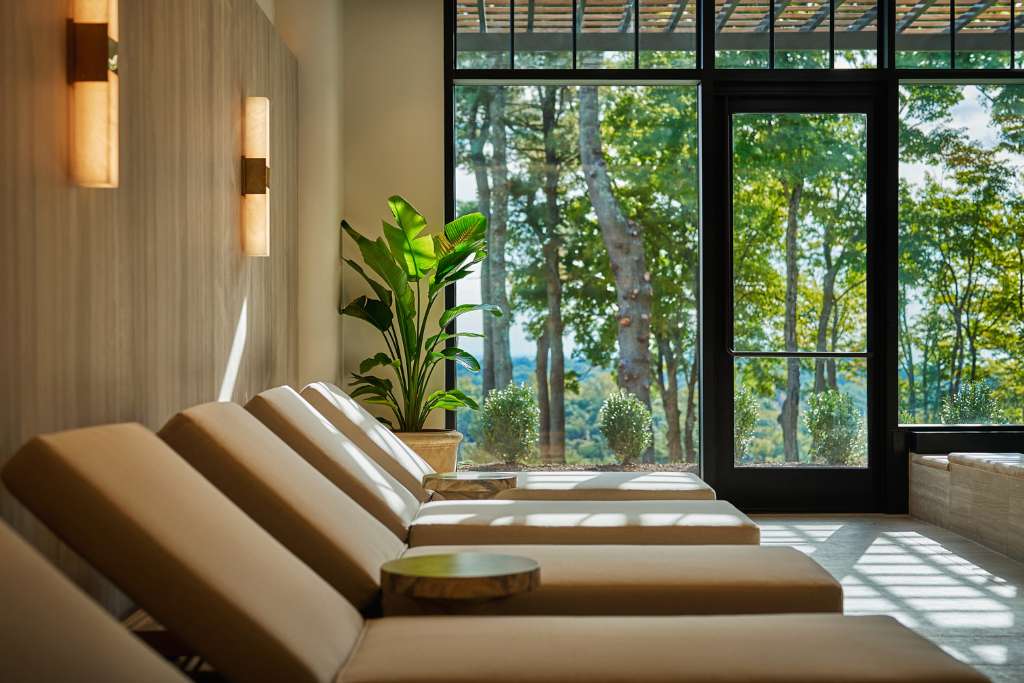
The showstopper comes, however, in my treatment: a seemingly simple (yet anything but) customized massage with Yuka who twists and contorts my arms and legs, shoulders and neck, feet and scalp into oblivion. At one point, she crawls onto the table alongside me, stretching, pushing, pulling, and pressing every knot and kink.
“Where did you learn this technique?” I ask, recognizing immediately her deeply rooted Asian spa influence. “Japan,” she replies. “I was born in Japan and studied there, and before coming here [Natirar], I worked at a top luxury hotel spa in NYC.” I have my guess as to which spa, but refrain from asking. It doesn’t matter. She is here now, in my NJ backyard, and I’m claiming her. Locals, pending availability, can utilize the spa on weekdays (Mondays through Thursdays).
“Next time, we do 90 minutes,” Yuka smiles. “Agreed.” I say, making note to reserve the very next day.
Farmer for a Day
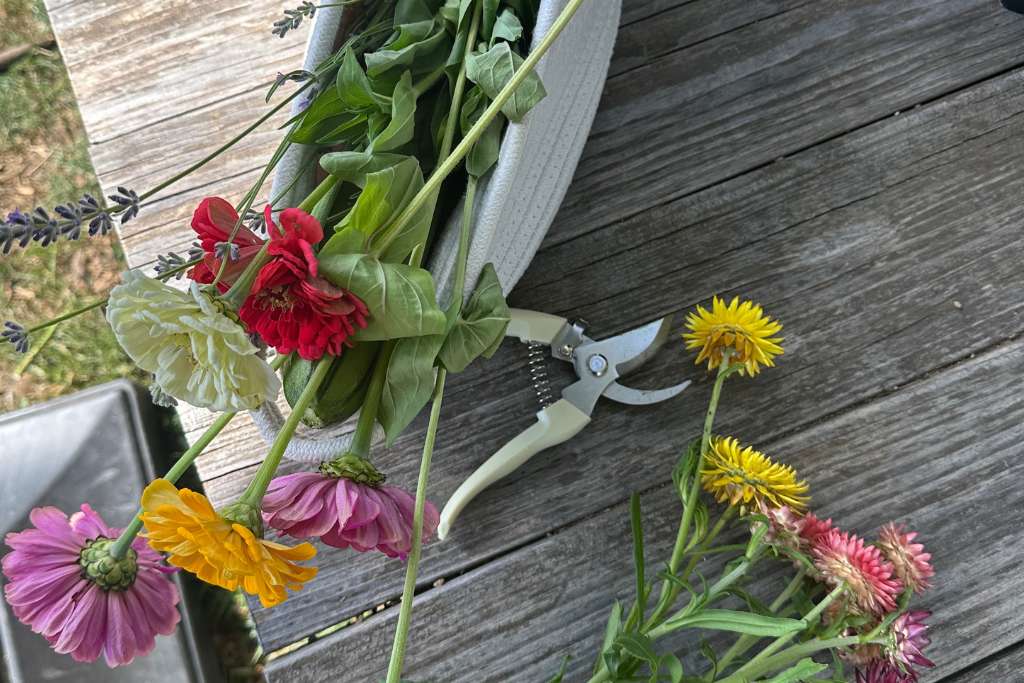
Prior to my grand-finale spa treatment and after another morning coffee on my terrace, I spend time on Natirar’s organic farm, where women farmers outnumber men. Marley, a New Jersey native with an effervescent smile and wearing cowboy boots and jeans, greets me — clippers and a soft white basket in hand. Together we walk through the rows upon rows of purple, red, pink, yellow flowers (dinner-plate zinnias and dahlias) and herbs (basil, rosemary, lemongrass), all part of the kitchen garden. Next we taste our way through the plump juicy bramble vines of red raspberries and blackberries, and tiny Mexican gherkins that look like miniature watermelons but taste like cucumbers, pausing to admire a giant sunflower field, and next to that: popcorn.
“Guests (and children especially) love the popcorn,” Marley tells me. “Many guests come from the city and have never stepped foot on a farm. They are surprised to see how their food is grown and to learn that popcorn is actually real corn.”
My ah-ha garden moment doesn’t come in the popcorn field, but via a loofah sponge which, before drying, looks uncannily like zucchini. Until this visit, I mistakenly thought all sponges came from the sea.
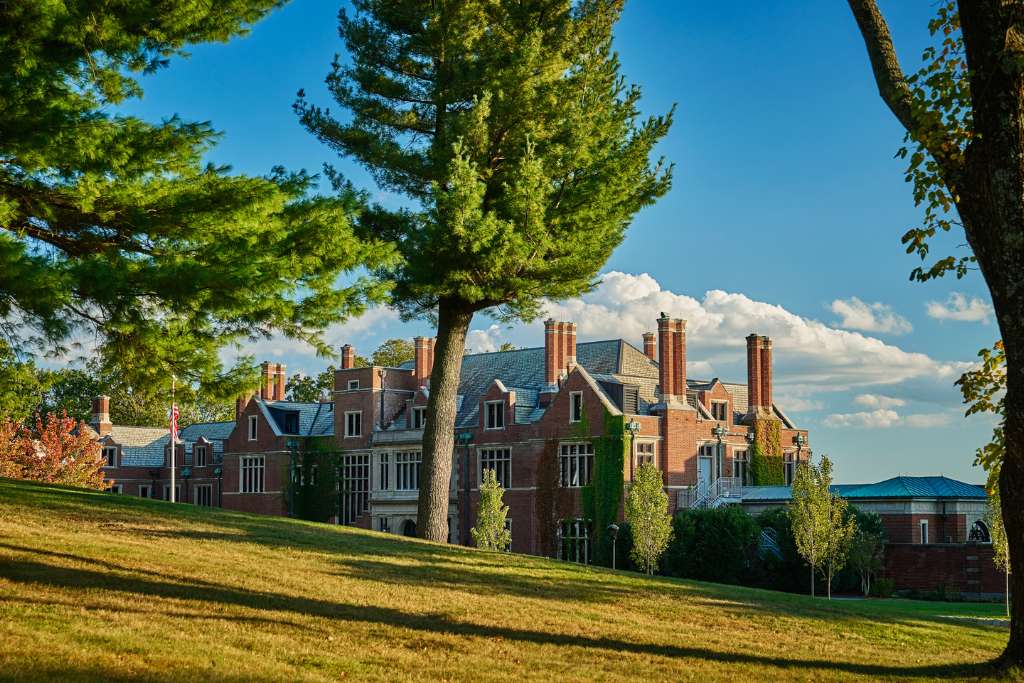
Next, we visit Elvis the rooster and his harem of chickens, used solely for egg production (up to 1,000 eggs per week are collected and used by the chefs). Remy sheep graze nearby and the farm is also home to 80,000 bees; their honey, divine.
“Clip away, and please take anything you want,” Marley smiles, handing me the sheers as I eagerly snip flowers, basil, lavender, lemongrass, and bundles of fresh eucalyptus — a take-home spa treatment to hang in my shower — before filling my pretty white basket with mini cucumbers, hot peppers, cherry tomatoes, and ginger, perfect for tea. Pausing at a picnic table, chickens cackling as backdrop, Marley gives me an impromptu lesson in the art of flower arranging, curating each of my flower selections for height and hue, removing their leaves for longevity, and even placing the bouquet into a water-filled vase.
Farm to Home
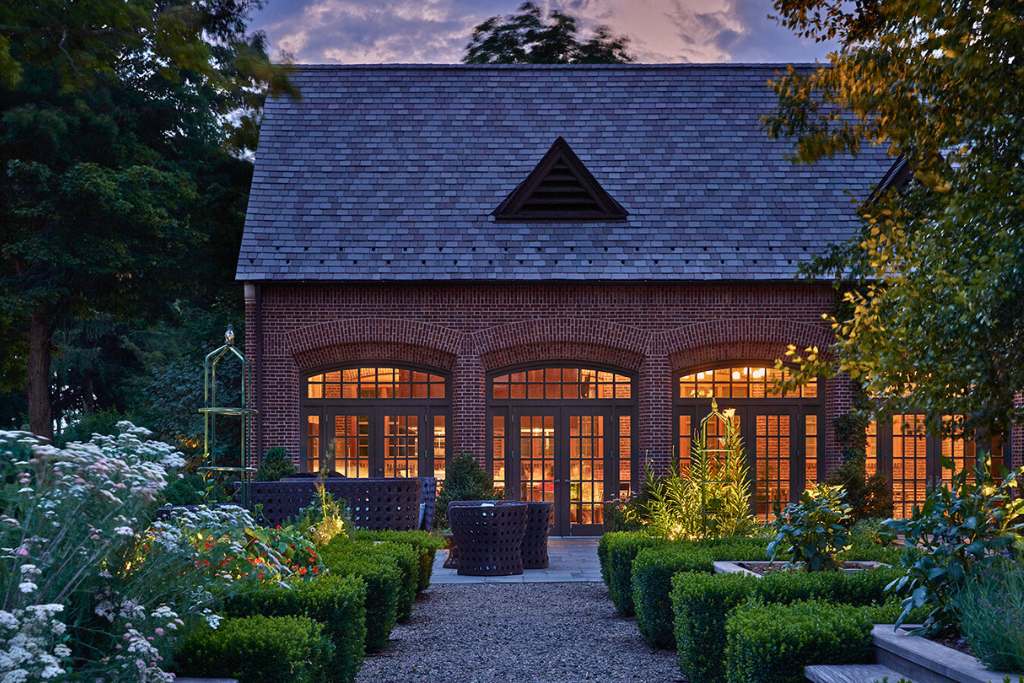
Over dinner that evening at Ninety Acres, the farm’s bounty shines. Cherry tomatoes and basil crown creamy burrata; fresh herbs accent red snapper; even dessert, a decadent crème brûlée, features the same plump blackberries I gobbled just hours earlier in the sun.
Pendry Natirar is considered the portfolio’s first full-on resort property; most of its hotels are urban based in cities including Baltimore, New York, Chicago, Mexico City, Tampa, Washington DC, and San Diego. Along with its massive acreage, 57 guest rooms, and 21 suites, Pendry Natirar features a lovely outdoor seasonal pool, tennis courts, wedding gardens and venues, and stunning, million-dollar residences, designed by renowned architect Bob Hillier. Yes, you can live here — just like Kate Ladd did, and the hundreds of women she helped to recalibrate, connect with nature, and heal.
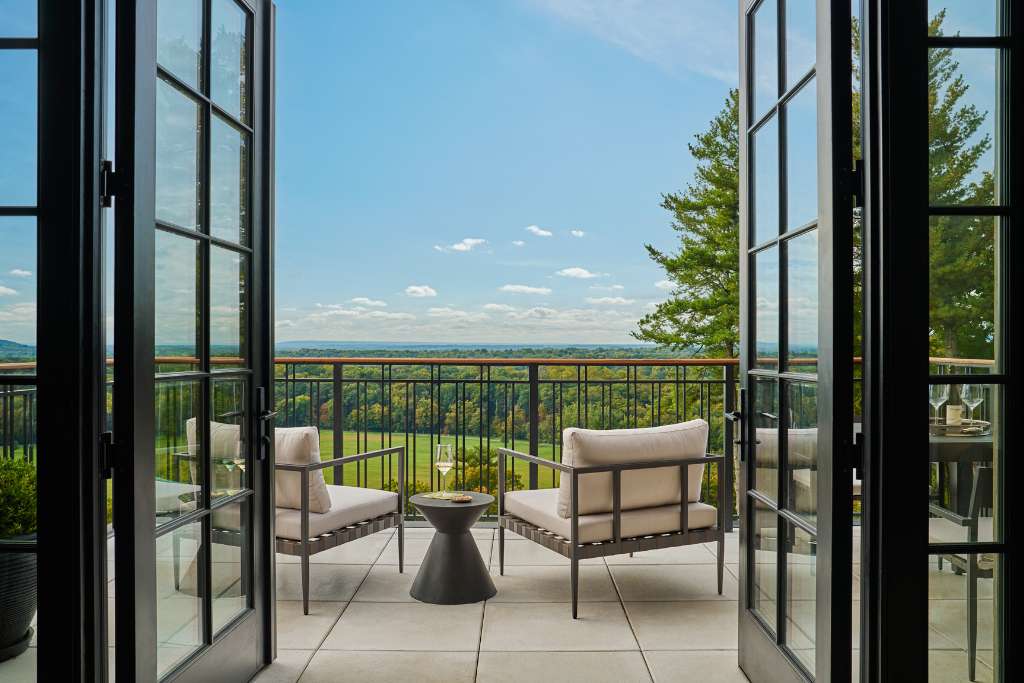
Already, after only two nights here (thank you, Yuka), I feel refreshed and renewed — and also a little gilded myself. As I depart through the mansion’s stately front doors, a uniformed entourage follows me — not with Kate Ladd-era steamer trunks but with my farm-fresh harvest. One carries my flower arrangement; another, my eucalyptus bundles and basket of fresh vegetables, honey, and herbs; and a third, my bag. They laugh as they help settle me into my car, adjusting flowers, positioning herbs. And as I drive the curvy backroads home (not a turnpike or major highway in sight), the scent is intoxicating — garden-state fresh — a symphony of just-picked basil, lemon verbena, and eucalyptus.
Feature image, courtesy of Pendry Natirar

